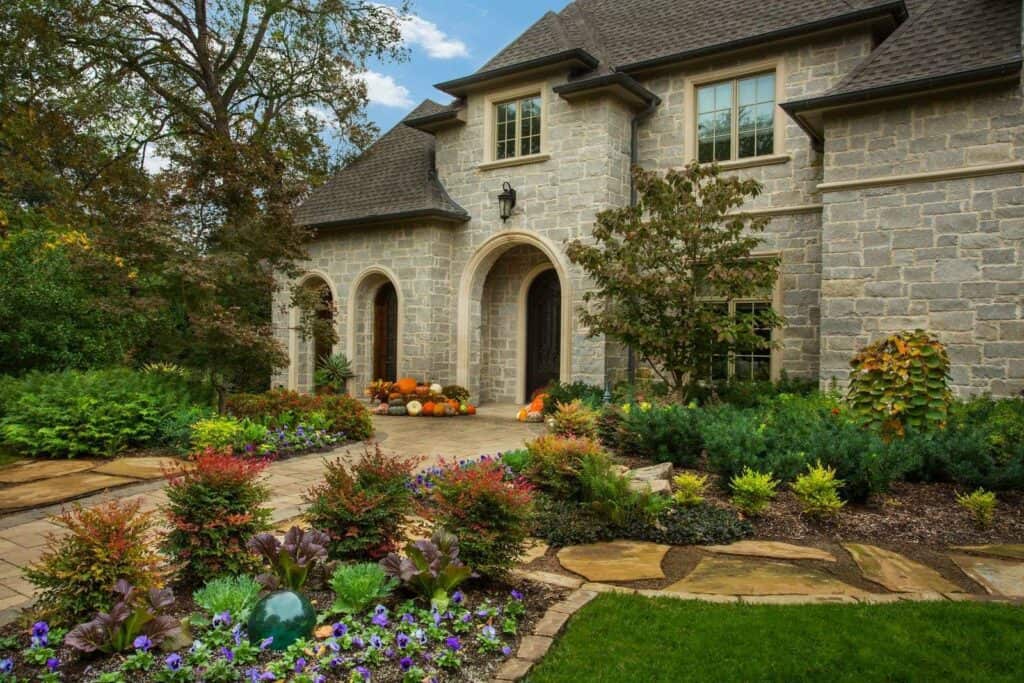Little Known Facts About Landscape Design.
Wiki Article
Landscape Design Fundamentals Explained
Table of ContentsExcitement About Landscape DesignAbout Landscape DesignThe Definitive Guide to Landscape DesignSome Ideas on Landscape Design You Need To Know
Formal design motif. Credit History: Gail Hansen, UF/IFAS The lawn is an extension of the home where a variety of tasks happen. A lawn can normally be divided right into three areas: public (the front backyard), private (the garden), and solution (usually the side lawn). The area of task locations depends mostly on the sort of location, the dimension of room required, the sort of activity, and the preferred proximity to various other activities and frameworks (Landscape Design).
The outside wall surface of your house frequently works as the first wall surface or beginning point of an exterior room. Inappropriate usages should be separated, and associated activities, such as food preparation and eating, should be created to make the yard much more efficient and delightful. When using hardscape to create spaces, use construction product similar to that made use of in your house for continuity from your home into the garden.
Connected rooms. Credit Rating: Gail Hansen, UF/IFAS Using comparable hardscape functions and duplicating plants draws the eye around the yard.
From a layout viewpoint, plant materials have 3 major functions in the landscape: visual, architectural and utilitarian. Aesthetically, plants produce a visually enjoyable environment and structurally plants arrange and define rooms.
The Landscape Design Ideas
For mental convenience plants are used as physical or suggested obstacles for personal privacy and safety. Physical obstacles obstruct both the view and accessibility to a space and include fences, walls and plant hedges. Landscape Design. Implied barriers, commonly low expanding plants, block gain access to however not the view (Figure 9). Various other features of plants include cleansing the air, stopping disintegration and dirt loss, retaining dampness in the soil, and returning raw material to the soil.Physical and implied barriers. Credit History: Gail Hansen, UF/IFAS For these reasons, the sorts of plants to be made use of (such as trees, hedges, or groundcovers) need to be chosen in the onset of preparation. Plant kinds are chosen for their functional capabilities so that their future purpose and required space can be considered at the same time.
The overhead plane, the vertical airplane and the ground plane need to all be considered to develop unit. Once the shape of a plant bed has been established, the plants ought to be massed (grouped) and layered to achieve aesthetic unity and the preferred quantity of unit. The size of a plant mass will certainly rely on the complete size of the yard, the dimension of the private plants in the mass, and the emphasis or influence wanted from the plant material.
Each plant mass is in front of, behind, or next to, one more mass. Credit Rating: Gail Hansen, UF/IFAS Duplicating plants within a mass and duplicating masses with similar plants ties the garden with each other. The specific plant attributes must be considered to successfully layer and mass plants.
Our Landscape Design PDFs
All plant make-ups start with the major structure plants, the large, primarily evergreen history plants-such as the trees and huge hedges. These plants separate or enframe areas, regulate the dimension of the room, and offer the starting point for selecting the proper qualities of the second layer, midground plants, for massing and infill.
Essential points in the yard should be highlighted by the use of special plants, unique structures, or garden accessories. Marking limits or entries to spaces can be made with entrances, arbors, and Bonuses actions, or through making use of unique and colorful plants. The type and/or style theme of the yard will typically aid determine the crucial factors and exactly how they must be highlighted.
Various other vital places in the backyard are focal points, which is used to visually organize a designed location. Different point of views or viewpoints can expose various compositions in the landscape that might need a range of focal factors.
Not known Facts About Landscape Design
Number 13. Plant types. Credit Scores: Gail Hansen, check UF/IFAS After type, texture is the next leading feature of a plant; crude, tool and fine appearances can be used for contrast and focus in the landscape. Form and structure both trump shade in the garden for most of the year. Nevertheless, during certain periods, shade will be the most noticeable attribute of the yard.

The enjoyable fragrance of plants, the noise of wind in the trees, the audio and appearance of water, and the colors and structures of sculptures, pots and yard more helpful hints furnishings all include in the experience of the garden. One detail that is frequently ignored is the impact of light on the aesthetics of the plants.
The entire yard adjustments in function and appearance over the course of the day, and the training course of a year, as the light and temperature change from early morning to night and season to period. Plant option need to take into consideration a plant's development price, its fully grown size and form, and the upkeep it will certainly need.
It is crucial to recognize the ultimate fully grown dimension of plants so they can be put in the right location and spaced properly when they are mounted. Offering plants space to grow is a challenge because the usual mature dimension is generally based on optimal growing problems and the environmental problems of a website may trigger a plant to expand larger or remain smaller.
Report this wiki page